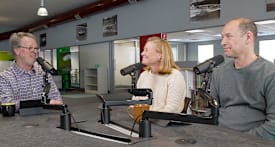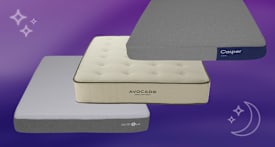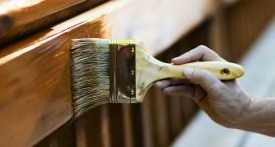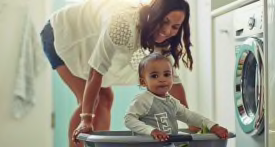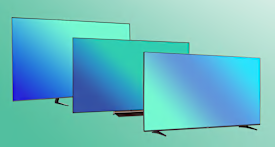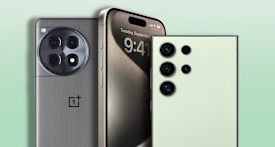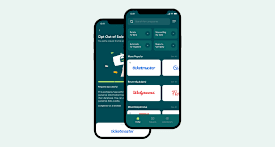
Sunshine is a mixed blessing. There's no question that it can be a danger to your skin. The ultraviolet (UV) radiation emitted by the sun is a known carcinogen. But moderate sun exposure may have benefits for your health, including stronger bones, better sleep, improved mood, and a healthier immune system.
And when you continuously shield yourself from the sun or always cover every inch of exposed skin with sunscreen, you could be missing out.
As the evidence grows that some sun exposure has benefits, many experts are rethinking their staunch sun-avoidance advice.
For example, despite Australia having one of the highest skin-cancer rates in the world, Cancer Council Australia recognizes that some time in the sun without sunscreen or other protection is important, according to Robyn Lucas, Ph.D., a professor at the Australian National University College of Health and Medicine, who researches environmental effects on health.
And the National Academy of Sciences recently assembled an international group of medical experts from different fields to discuss sun safety. The report from that meeting, published in JAMA Dermatology, stated that "although the harms associated with overexposure outweigh the benefits, the beneficial effects of UVR [ultraviolet radiation] exposure should not be ignored in developing new sun safety guidelines."
Bone Health and Beyond
The best known benefit of sun exposure is vitamin D synthesis, which occurs in the skin in response to the sun's UVB rays. Vitamin D is a critical nutrient. "It's absolutely essential to promote absorption of calcium, the mineral that helps keep bones strong," says Clifford Rosen, M.D., an osteoporosis researcher at the Maine Medical Center Research Institute in Scarborough.
But sunlight may play other roles in promoting good health as well. The research is ongoing, but so far studies suggest that UV exposure might lower blood pressure (which helps to protect against heart attack and stroke), curb appetite, and reduce the risk of obesity, type 2 diabetes, and possibly certain autoimmune diseases.
Sunshine may even be linked to longevity. A Journal of Internal Medicine study that monitored nearly 30,000 Swedish women for about 20 years found that those who spent more time in the sun lived six months to two years longer than those who racked up less sun exposure. "More research is required to replicate this work, but if it's a real effect, it's very important," Lucas says.
But the UVB rays that help our skin produce vitamin D are also the same type that cause sunburn, and getting burned is a major risk factor for skin cancer. That's why it is so important to find the right balance.
Short Stints Do the Trick
According to Rosen, in the summer it takes only about 10 minutes a day of unprotected solar exposure on a small area of skin to produce around 5,000 IU of vitamin D, which is enough for most people—even older folks, who have a slightly reduced capacity to make vitamin D—to maintain normal blood levels.
But for some people, 10 minutes might be too long; for others, too short. "How much is enough is hard to quantify since skin pigmentation affects how much UV radiation your skin absorbs, but it's way less than you need to get a sunburn," Lucas says.
To determine the length of time you can stay in the sun without burning, Lucas suggests using the UV index, which forecasts the level of solar radiation in your area on a scale of 0 to 11. The UV index varies by location and time of day and year. To find the UV index for any particular day and time in the U.S., enter the ZIP code of the area you're in on the Environmental Protection Agency's website.
To calculate the right UV dose for you, divide 60 (as in the number of minutes in an hour) by the UV index to find out how many minutes outdoors it will take for you to get 1 SED. SED stands for "standard erythemal dose," a fixed dose of sun intensity that will cause erythema, or reddening of the skin.
See the table below for the approximate SED it takes for different skin types to burn. For example, if the UV index is 7, divide 60 by 7 to get 8 minutes for 1 SED. If you are fair, you'll get sunburned with 2 to 3 SED (16 to 24 minutes).
"These numbers are a generalization of skin type by ethnicity," Lucas says. So it is best to be conservative using them. In the above example, for instance, to be on the safe side you might go in the sun unprotected for 12 minutes maximum.
Most important, always err on the side of safety. "You don't even want to get a little pink, because UV exposure that is enough to cause sufficient damage to the skin clearly outweighs the benefits of that exposure," says Robert S. Stern, M.D., a professor of dermatology at Harvard Medical School.
Keep in mind, too, that the amount of time you can spend in the sun without burning on a particular day doesn't reset to zero with subsequent time outside. "If, for example, the calculation you work out involving the UV index is 15 minutes, that should be your total limit for the day—whether that's in one sitting or two or three sittings," Lucas says.
Let In the Light
When heading out to soak up some sun, Lucas recommends applying sunscreen to your face and hands (they're always getting sun and are at high risk for skin cancer, wrinkles, and brown spots), wearing a broad-brimmed hat and sunglasses, and exposing what you can of your arms and legs. If you're particularly sun-sensitive (for instance, you have had skin cancer or you take a medication—such as certain diuretics and antidepressants—that increases your risk of sunburn), talk to your doctor before going sans sunscreen.
Editor's Note: This article also appeared in the June 2018 issue of Consumer Reports On Health.



